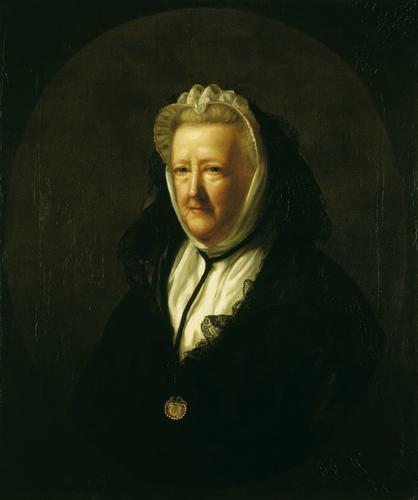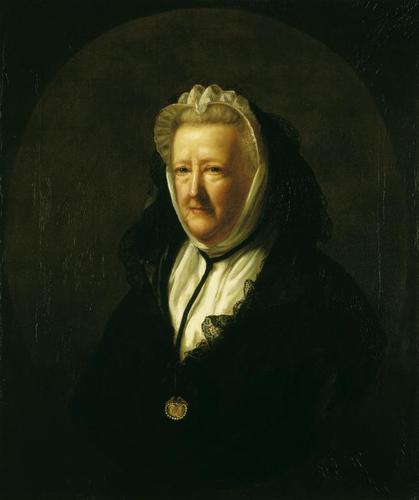-
1 of 253523 objects
Mary Delany (née Granville) (1700-88) 1782
Oil on canvas | 76.5 x 63.6 cm (support, canvas/panel/stretcher external) | RCIN 400965

John Opie (1761-1807)
Mary Delany (née Granville) (1700-88) 1782

John Opie (1761-1807)
Mary Delany (née Granville) (1700-88) 1782


-
Mary Delany (1700-88) is best described in the words (written by Dr Hurd) of her memorial plaque, in St James's, Piccadilly: 'She was a lady of singular ingenuity and politeness and an unaffected piety. These qualities endeared her through life to many noble and excellent persons and made the close of it illustrious by procuring for her many signal marks of grace and favour from their Majesties.' Born Mary Granville, she first married at the age of 16 to Alexander Pendarves, a wealthy land-owner more than forty years her senior, and then, more happily, to Patrick Delany, Dean of Down. She was widowed for the second time at the age of 68 and went to live for six months of each year with her friend the dowager Duchess of Portland at Bulstrode Park, Buckinghamshire. The two women shared a great passion for botany, the Duchess patronising artists such as the famous illustrator Ehret. It was at Bulstrode that Delany, in her seventy-third year, began to make her famous cut-paper flowers. In his Anecdotes, Horace Walpole commented that Mary Delany was 'a lady of excellent sense and taste, who painted in oil, and who invented the art of paper mosaic'.
Mary Delany first met the King and Queen in 1776 at Bulstrode, which is 30 minutes' carriage drive to the north of Windsor. The royal visits to Bulstrode were followed by return visits (from the Duchess and Delany) to Windsor. Mary Delany became much loved by the King, Queen and princesses. After the Duchess of Portland's death in July 1785, Mary Delany's small personal income proved insufficient. The King therefore arranged for her to receive an annuity of £300 and a house in St Albans Street, Windsor, into which she moved on 30 September 1785, and where she lived for the rest of her life. It was in this house that the King and Queen first met the novelist Fanny Burney, who served the Queen as Second Keeper of the Robes for five years from July 1786 to July 1791. In her portrait Mary Delany wears a locket with the letters CR - a reference to Queen Charlotte, who had almost certainly given the locket to her as a token of her friendship.
This portrait by the Cornish artist John Opie was commissioned by George III and was described in February 1782 in a letter from Horace Walpole to Horace Mann: 'it is pronounced like Rembrandt, but as I told her, it does not look older than she is, but older than she does'. The portrait was soon placed in the Queen's Bedchamber at Buckingham House, alongside that of Bishop Hurd by Thomas Gainsborough. In 1786 Fanny Burney commented: 'How worthily paired! What honour to herself, such honour to them!'
Catalogue entry adapted from George III & Queen Charlotte: Patronage, Collecting and Court Taste, London, 2004Provenance
Commissioned by George III and Queen Charlotte; recorded in the Queen's Bedchamber at Buckingham Palace in 1790
-
Creator(s)
-
Medium and techniques
Oil on canvas
Measurements
76.5 x 63.6 cm (support, canvas/panel/stretcher external)
94.3 x 81.7 x 7.1 cm (frame, external)
Category
Object type(s)
Other number(s)
Alternative title(s)
Mary Granville, Mrs Delany (1700-88)
Mrs. Delany